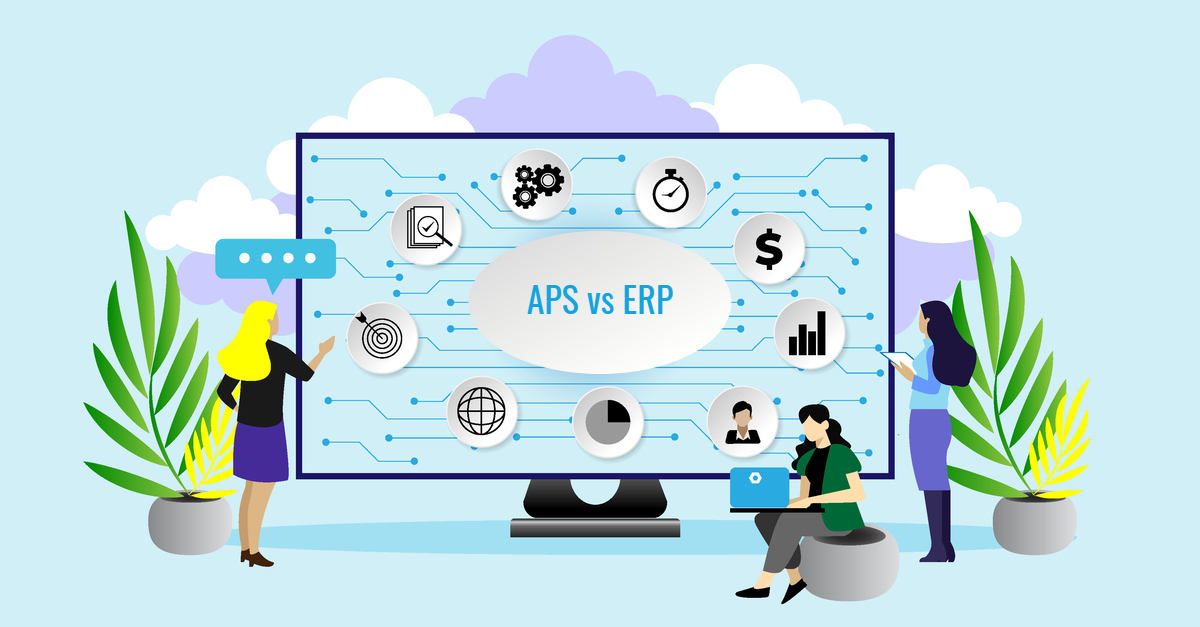
We all know that having a decent ERP system is convenient to manage various business processes, and to automate workflows. But if you’re using additional spreadsheets to support your Sales & Operations Planning decision-making process, and it becomes too big and complex in an instant, it’s time to put an Advanced Planning and Scheduling (APS) system in the spotlight.
Recently, we bundled our 15 years of experience on this topic in a holistic, 7-step approach to drive successful S&OP implementations. Thereby, we proactively challenge our customers and prospects to drive sustainable change and value through S&OP.
Following this approach, it becomes clear that there is more to S&OP than just the process. It is also about leveraging powerful analytical tools and techniques. That is why we dedicated a webinar and blog on this topic; APS vs ERP, how their respective functionalities stack up, and which benefits they both have.
According to independent research by Lora Cecere, the most utilized S&OP tool are spreadsheets, with 92% of companies using them in their planning. Once companies become more mature and therefore more complex in their supply chain processes, they need more ways to follow-up on their inventories, cash-flow, demand- and market-sensing, etc. As you try to improve the maturity of your processes, spreadsheets will eventually break down and decent tooling becomes key to improve your S&OP processes.
The next question we should deal with concerns the right choice of S&OP tools in respect to your specific business needs. Do I opt for an ERP system (by, for instance, SAP, Microsoft or Oracle), or do I pick a ‘best-of-breed’ option, as Lora Cecere calls it, which describes software companies specializing in S&OP or advanced planning. Her research indicates that the last option comes out on top, as the time to implement a best-of-breed is shorter than in the case of an ERP extension with a planning tool, the initial budget is respected more often, the ROI is shorter and the satisfaction is higher.
“So why would companies implement solutions that cost more, are longer to deploy, and have lower user satisfaction?”, Lora Cecere rightly asks herself. For one, “the bigger the vendor, the tougher it is to publish a critical article”. Analysts and consultants alike usually recommend the solutions by big players because these implementations better fit their own models and ways of working. In comparison, best-of-breed solutions by S&OP vendors are less lucrative for consultants, but perform better overall at implementing supply chain planning. That is why Lora recommends using “more focused firms”, such as Solventure, to implement and integrate your S&OP solutions.
An APS, such as Arkieva*, goes further than merely managing operational planning data, like an ERP. Instead of being a purely transactional system that contains some planning logic (in the case of ERP), APS software is specifically designed for managing tactical and strategic planning data.
For instance, if you choose to implement the Arkieva Demand Planning module, your system will receive the order/shipment history and customer/product master data from your ERP, calculate the demand forecast and funnel it back into the ERP. Naturally, there are numerous other modules to be added, such as an S&OP Management module, a Master Planning System (MPS), a Rough Cut Capacity Plan etc., which all valorize the supply chain data of your ERP into more refined, clear and visual analytical forecasts. These crucial and comprehensive calculations are usually not supported by the planning modules of stand-alone ERP systems.
Nevertheless, many business leaders opt for several ‘integrated’ ERP planning modules coming from the same big vendor, because they believe these different solutions will immediately work together like a charm. “Nothing could be further from the truth”, Lora Cecera deducts from her research. “In many cases, the best-of-breed solutions are more integrated than the ERP Expansionist solution” and this is because they focus solely on the planning aspect of your supply chain, instead of adding it as an afterthought.
In these COVID-19 times, being able to run and visualize scenarios quickly and efficiently is key in order to cope with sudden economic challenges and additional regulations for your business. The impact of drops in demands or production bottlenecks on your supply chain need to be solved in an informed way, supported by your own planning data.
By talking with some of our customers during these difficult times, it has become clear that ERPs and spreadsheets alone don’t cut it when you have to move fast and need a clear visualization of your supply chain situation. We believe that a powerful APS solution can give you this planning support to fall back on in any time of need.
*Note Arkieva: Arkieva is a global supply chain planning software provider with offices in North America, Europe and Asia Pacific. Solventure is the European implementation partner of Arkieva.
Check out our webinar with our CEO Bram Desmet. He will dive deeper into this topic and guides you through the different functionalities and benefits of APS systems.
These Stories on S&OP